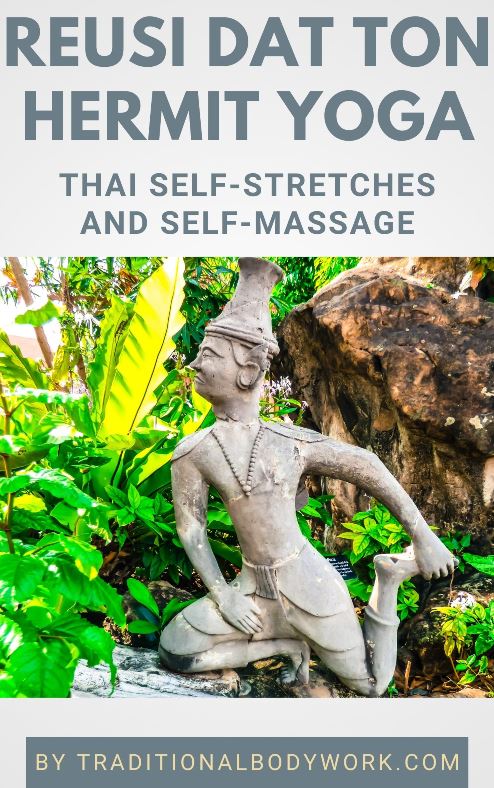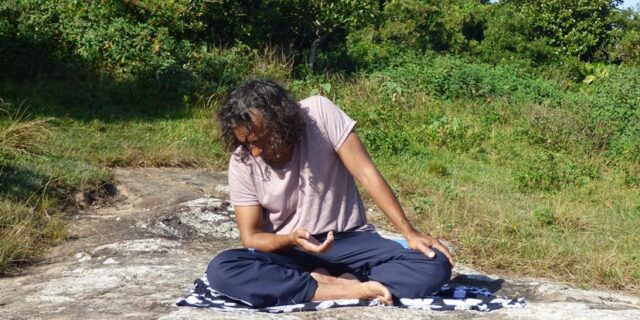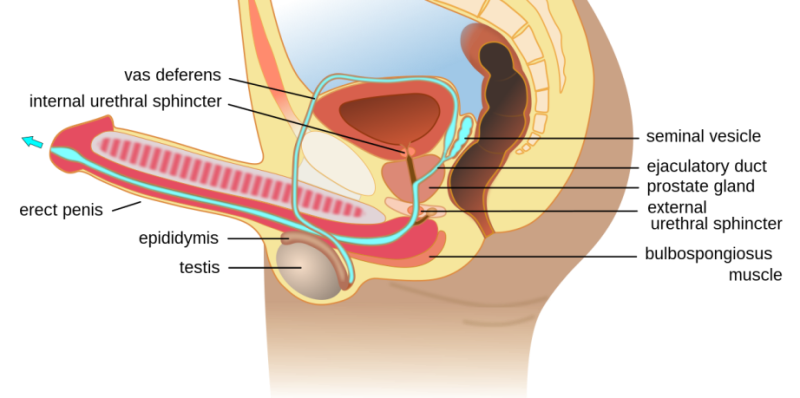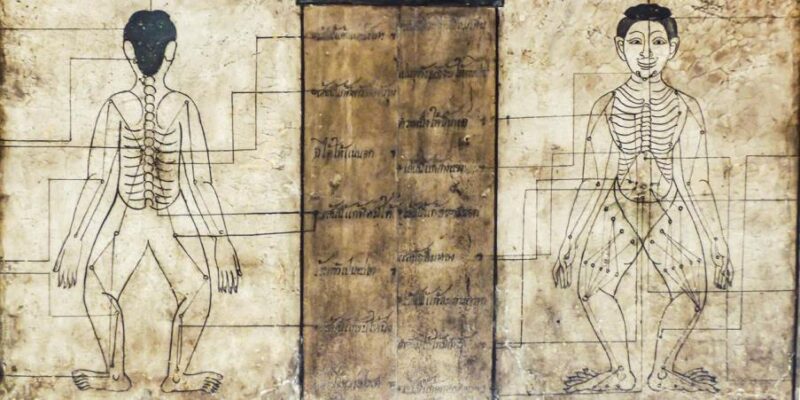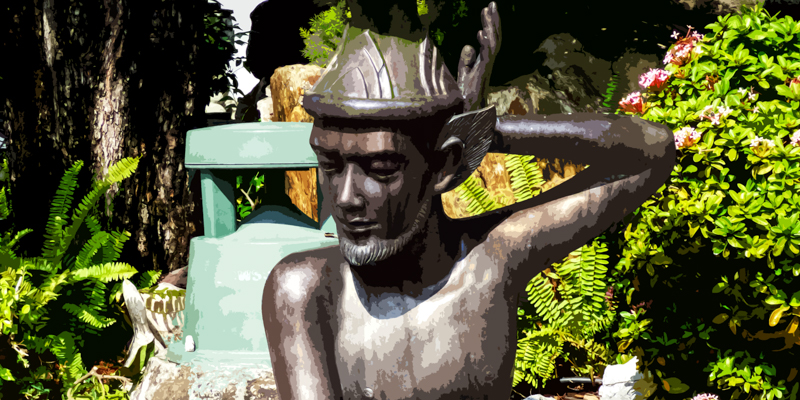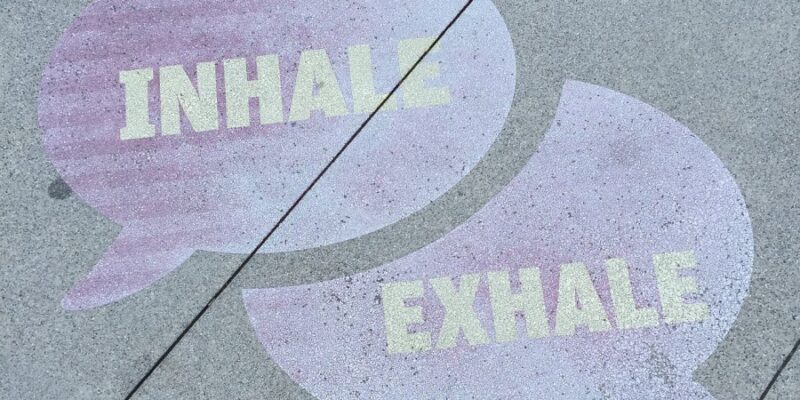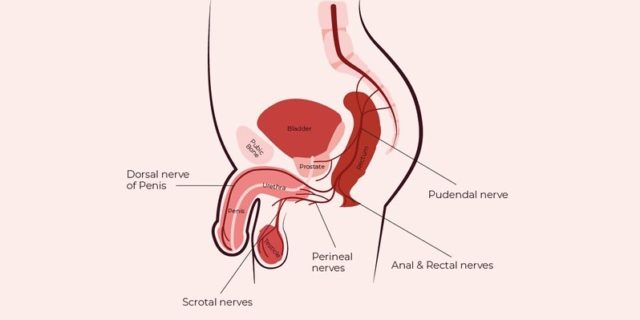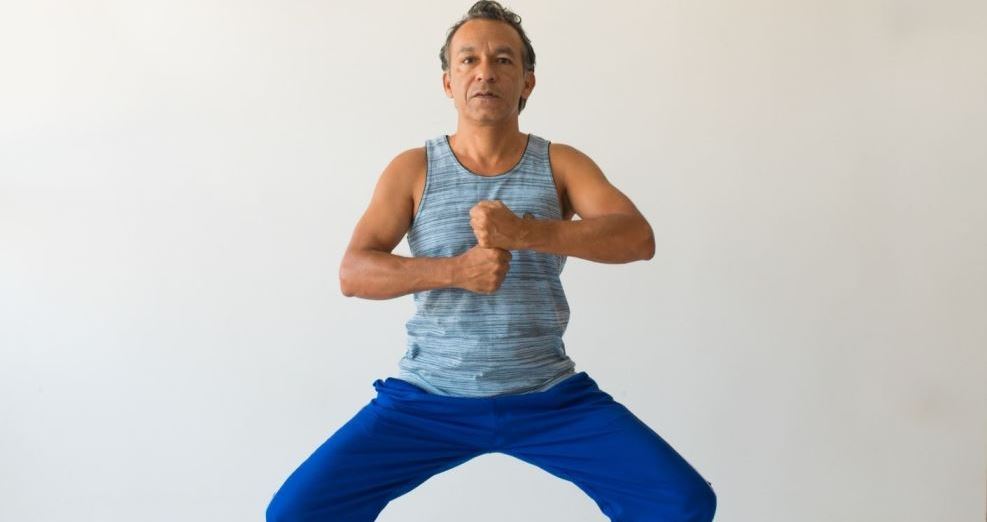
Reusi Dat Ton — also written Reusi Datton — is a Traditional Thai Yoga Self-Stretching and Self-Massage modality that consists of a broad range of exercises, each of those addressing a different domain of our body and mind. In this post, we discuss how Reusi Dat Ton can maintain or increase prostate health in men by exercising the pelvic floor muscles.
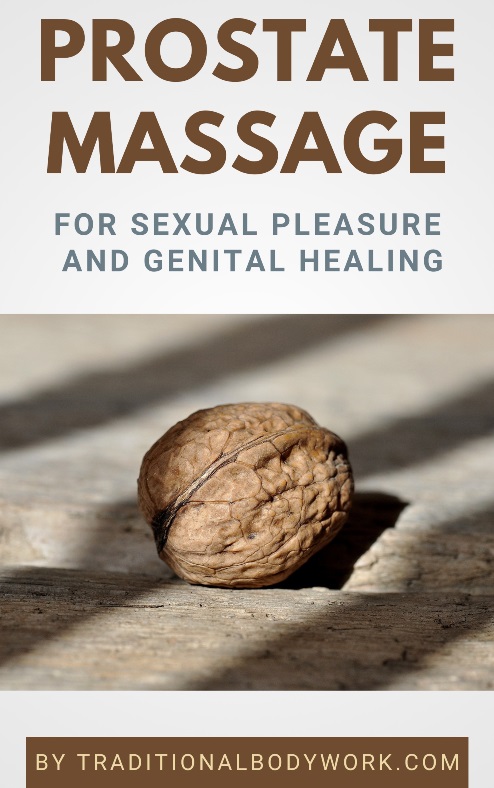
The pelvic floor is located near the prostate gland, and the urethra and the rectum pass through it. A healthy pelvic floor helps in keeping you continent (urinary and fecal continence), can promote blood flow to the prostate, mitigates symptoms of Benign Prostate Enlargement, and aids in erectile function, ejaculation control, and sexual orgasms.
A means to strengthen the pelvic floor is by doing Pelvic Floor Exercises, which in the West are perhaps best known as Kegel Exercises. The main action to perform in these exercises is to engage the muscles that hold in urine and avoid defecation, that is, working out the pelvic floor muscles.
The exercises can be done standing, sitting or lying, in a variety of poses and positions. To train engaging the right muscles, try stopping the flow of urine while peeing. In fact, one tightens the muscles around the scrotum, perineum and anus, hold them for a few seconds, and then releases. In Reusi Dat Ton, you’ll find a specific exercise that addresses the pelvic floor, which is the Reusi Dat Ton Exercise For Longevity.

The core idea behind this Reusi Datton exercise is to train the pelvic floor muscles because it’s thought that a weak pelvic floor “leaks” Vital Life Force (Lom Pran), and leaking Life Force means we will feel less energy and vitality, profit less from the flow of Life Force through our body (which can cause a range of discomforts or illnesses), and as a whole will have a shorter life.
Moreover, the traditional way of breathing while doing Reusi Dat Ton exercises already engages the pelvic floor. It even means that regardless of what exercise you do in Reusi Dat Ton, you will automatically train the pelvic floor muscles by using a breathing technique that is quite similar to Tibetan Tummo Breathing (Vase Breathing).
However, keep in mind that a tight and over-worked pelvic floor may bring its own health problems. Hence, the pelvic floor muscles also need relaxation, and stretching them regularly is of importance.
Some ways to do that is by using a proper abdominal breathing technique with full inhales and exhales, practicing the Yogic Child’s Pose (called Balasana) and the Yogic Happy Baby Pose (called Ananda Balasana), and carrying out deep squatting exercises.




